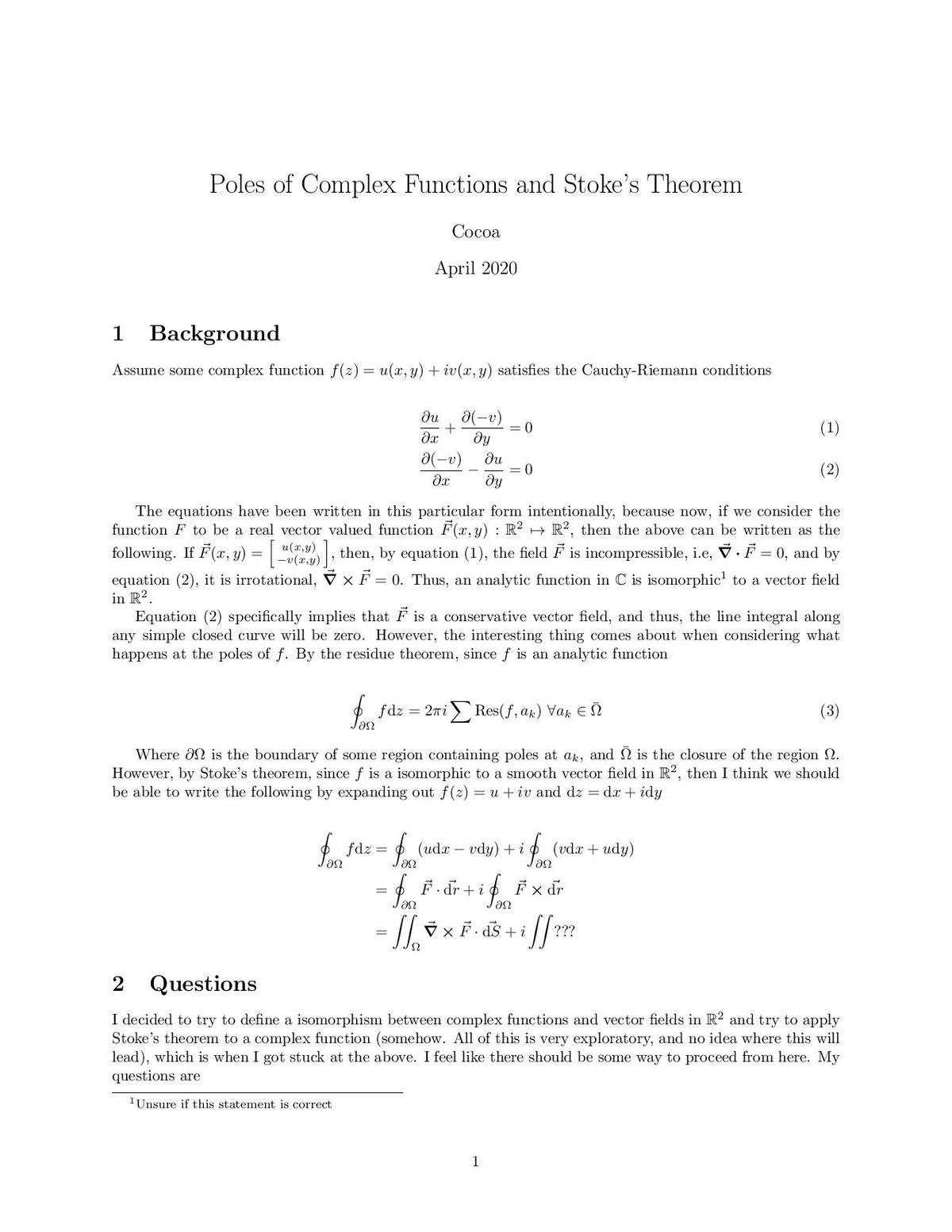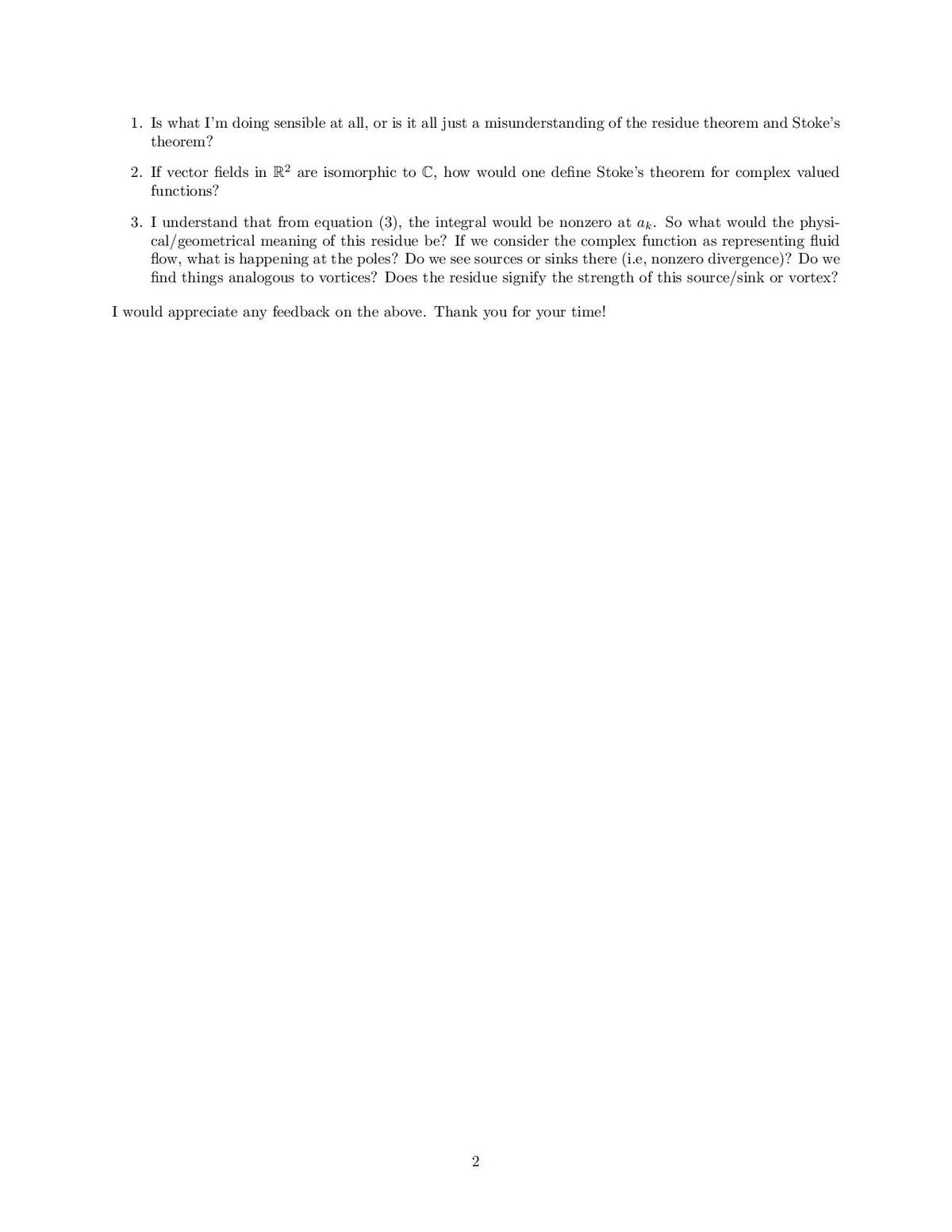Is the complex plan isomorphic to R2?
A complex number can be represented as an element of the manifold with the point (as that's how I've learned about Complex Numbers and thought of the complex plane). Thus we have a natural isomorphism between complex numbers and the real plane .
If we continue, we can now think of an isomorphism between the set of analytic functions on the complex plane to vector fields on the real plane . However, I tried to apply Stoke's theorem around a closed loop at the pole of an analytic complex function to get something like the Residue theorem, however I ran into an issue from which I did not know how to proceed. I've attached two images explaining my thought process.


All this led me to realize that you can divide complex numbers but you can't divide elements of with each other. So I have the following question in addition to the questions mentioned in the image - Is the usual topology of the complex plane the same as the usual open ball topology of ? If not, can we accurately draw analogies between complex numbers and the real plane?
Easy Math Editor
This discussion board is a place to discuss our Daily Challenges and the math and science related to those challenges. Explanations are more than just a solution — they should explain the steps and thinking strategies that you used to obtain the solution. Comments should further the discussion of math and science.
When posting on Brilliant:
*italics*or_italics_**bold**or__bold__paragraph 1
paragraph 2
[example link](https://brilliant.org)> This is a quote# I indented these lines # 4 spaces, and now they show # up as a code block. print "hello world"\(...\)or\[...\]to ensure proper formatting.2 \times 32^{34}a_{i-1}\frac{2}{3}\sqrt{2}\sum_{i=1}^3\sin \theta\boxed{123}Comments
There are no comments in this discussion.